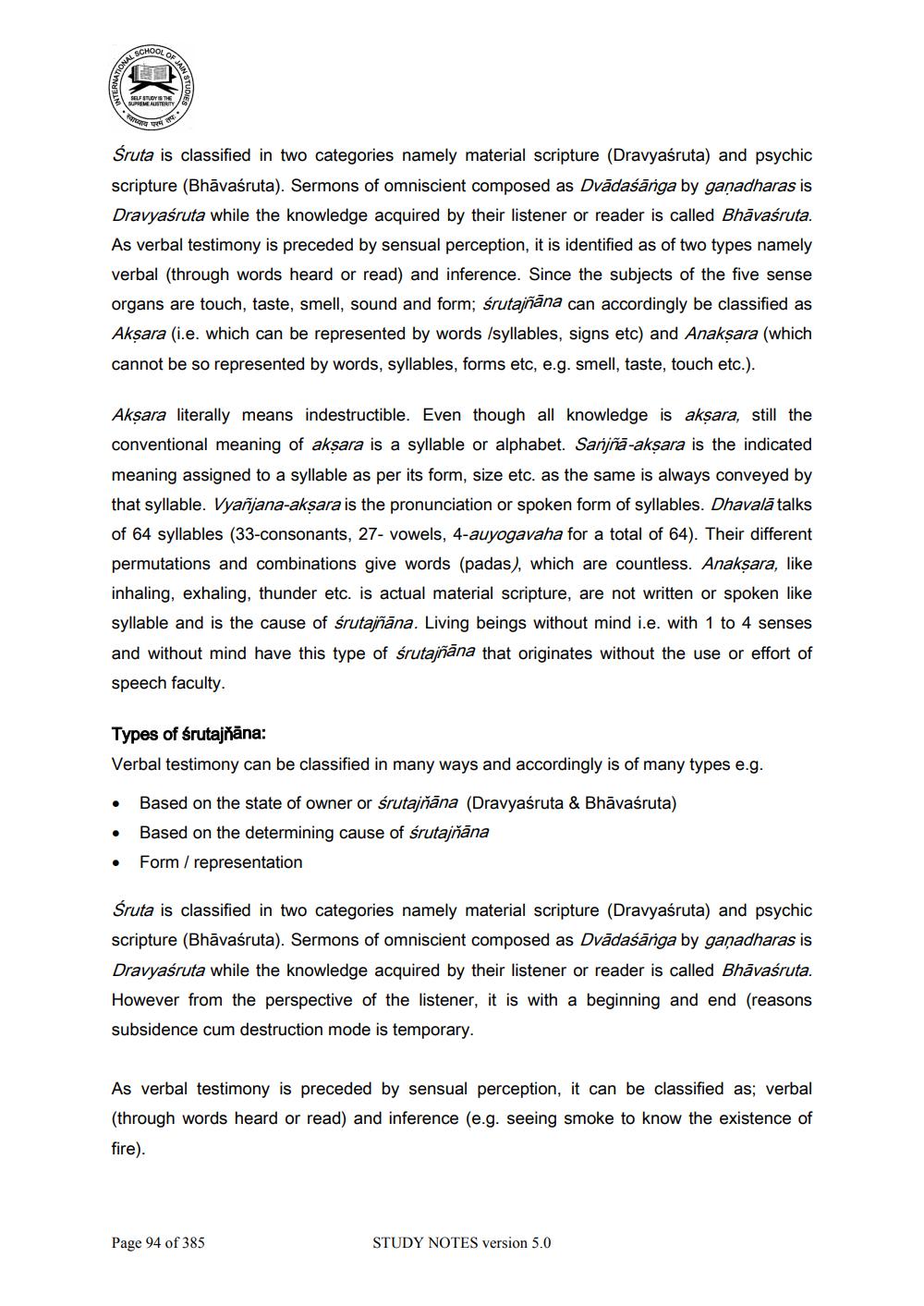________________
SCHOOL OF
TIONAL
AN STUDIES
•
SELF STUDY IS THE SUPREME AUSTERITY
Śruta is classified in two categories namely material scripture (Dravyasruta) and psychic scripture (Bhāvaśruta). Sermons of omniscient composed as Dvādasariga by gaṇadharas is Dravyaśruta while the knowledge acquired by their listener or reader is called Bhāvaśruta. As verbal testimony is preceded by sensual perception, it is identified as of two types namely verbal (through words heard or read) and inference. Since the subjects of the five sense organs are touch, taste, smell, sound and form; śrutajñāna can accordingly be classified as Aksara (ie. which can be represented by words /syllables, signs etc) and Anakṣara (which cannot be so represented by words, syllables, forms etc, e.g. smell, taste, touch etc.).
Aksara literally means indestructible. Even though all knowledge is akṣara, still the conventional meaning of aksara is a syllable or alphabet. Sarja-aksara is the indicated meaning assigned to a syllable as per its form, size etc. as the same is always conveyed by that syllable. Vyañjana-akṣara is the pronunciation or spoken form of syllables. Dhavala talks of 64 syllables (33-consonants, 27- vowels, 4-auyogavaha for a total of 64). Their different permutations and combinations give words (padas), which are countless. Anakṣara, like inhaling, exhaling, thunder etc. is actual material scripture, are not written or spoken like syllable and is the cause of śrutajñāna. Living beings without mind i.e. with 1 to 4 senses and without mind have this type of śrutajñāna that originates without the use or effort of speech faculty.
Types of śrutajñāna:
Verbal testimony can be classified in many ways and accordingly is of many types e.g.
Based on the state of owner or śrutajñāna (Dravyaśruta & Bhāvaśruta)
Based on the determining cause of śrutajñāna Form/representation
Śruta is classified in two categories namely material scripture (Dravyaśruta) and psychic scripture (Bhāvaśruta). Sermons of omniscient composed as Dvādaśānga by ganadharas is Dravyaśruta while the knowledge acquired by their listener or reader is called Bhāvaśruta. However from the perspective of the listener, it is with a beginning and end (reasons subsidence cum destruction mode is temporary.
As verbal testimony is preceded by sensual perception, it can be classified as; verbal (through words heard or read) and inference (e.g. seeing smoke to know the existence of fire).
Page 94 of 385
STUDY NOTES version 5.0




